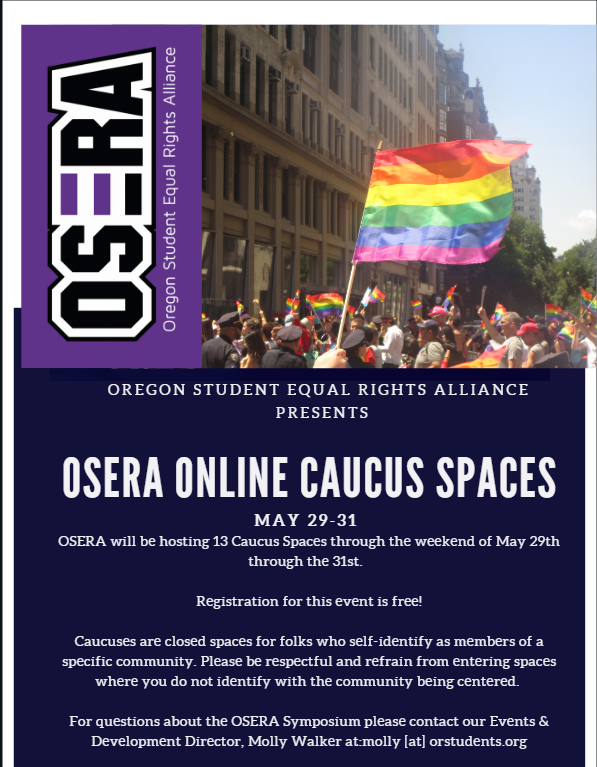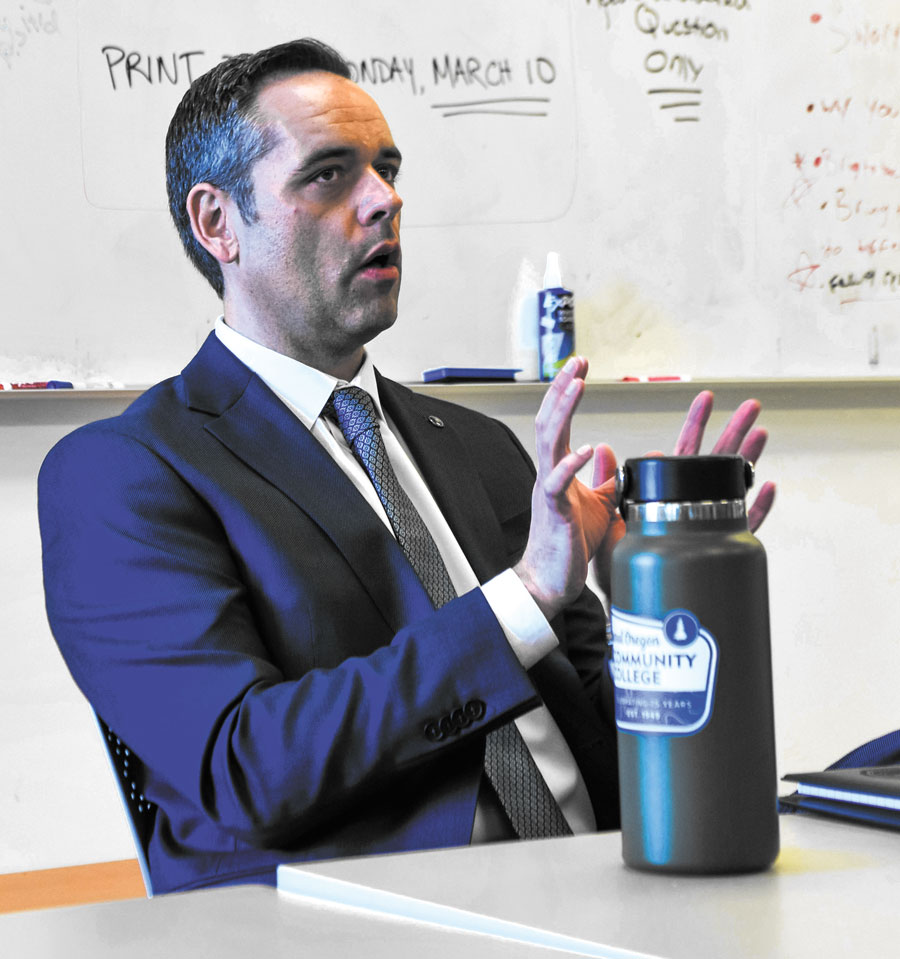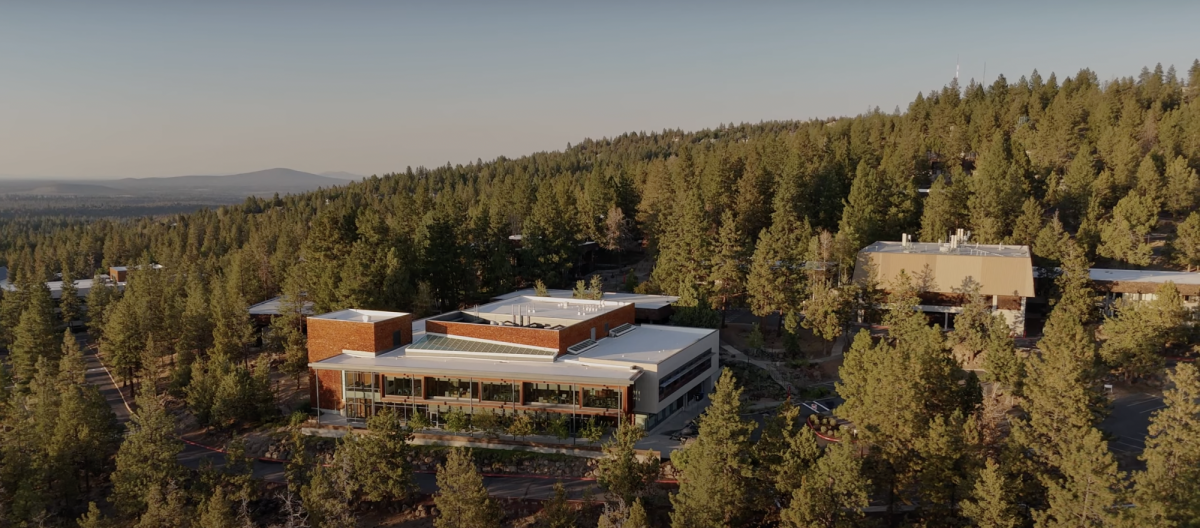
On Oct. 10, the Associated Students of Central Oregon Community College decided to hold off the $10,000 in student fees they had allocated for campus childcare last year. This money had been put forth as a “good-faith effort” to indicate that student government supported COCC’s attempt at on-campus childcare, according to Taran Smith, ASCOCC advisor.
“But it was prematurely allocated,” Smith said. “Student government was interested in showing students that they do prioritize it as an issue.”
This $10,000 included money for staff and many of the expenses related to getting a campus childcare center up and running, according to Smith. However, the college isn’t yet to the point where they can talk about costs or funding.
“There’s no mechanism yet,” Smith said. “It was basically us saying ‘We’ll put this out and you can catch up… We’re not ready for [childcare] yet.”
Of students who receive the Free Application for Federal Student Aid at COCC, 38 percent have children, according to Smith. However, COCC is “in the minority” of two-year colleges in Oregon when it comes to information services and referral resources for childcare.
Subsidy model not applicable at COCC
Oregon State University-Cascades has implemented a childcare subsidy program that takes student fees and uses them to pay for student parent’s childcare. OSU-Cascades generally has a surplus in that money, Kent Vernon, program director with the Associated Students of Cascades Campus, told The Broadside in the Oct. 23 issue.
ASCOCC tried to do the same thing in the 2006-07 school year, according to a report from the Childcare Task Force in fall 2012. ASCOCC provided a grant of $15,000 that was distributed through the Financial Aid office, but found that their resources were too little to cope with the problem fairly.
“It’s not equitable or sustainable to provide a childcare subsidy. The need would be millions,” Smith said.
The subsidy awarded 24 students amounts that “varied from 300 for one term to 900 for three terms,” according to the report.
“It is feasible that we could operate within this structure in the future and administer it differently with much larger funding from different sources,” the report said, “but it seems to be the least effective method of delivery when we consider our options.”
The main problem with ASCOCC’s subsidy was that it would be awarded on a first-come, first-serve basis, according to Smith.
“Say you have [a subsidy of] $10,000. How would you prioritize who gets that money?” Smith said. “The need is too great.”
Also, according to a survey put out by ASCOCC in the summer of 2012, seventy-five percent of students parent’s didn’t take their children to childcare centers–they used family, friends or themselves for childcare.
“The majority wouldn’t benefit from it,” Smith said.
Childcare not a campus issue
Kurt Killinger, director of legislative affairs with ASCOCC, doesn’t believe that this problem can be fixed if the focus is simply at COCC.
“We had $30,000 allocated last year [for student childcare] and we couldn’t use it because there are so many hurdles at the campus-wide and state-wide level,” Killinger said. “The problem is it won’t do anything.”
There’s a lot of red tape involved with providing childcare, according to Killinger, such as laws about sex offenders in the immediate vicinity.
“What if you have 500 registered sex offenders on campus?” Killinger said. “We can’t prevent them from going to school.”
Killinger believes that the only way to find a lasting solution is to pursue it at the state level, which is what ASCOCC is doing by supporting the Oregon Student Association and the Oregon Community College Student Association in their lobbying.
It’s the issue Oregon’s lawmakers are most concerned with right now, Killinger said. He points to Jason Conger’s visit to COCC on Sept. 21, where Conger asked students to back his legislative initiative to provide on-campus childcare.
“There’s nothing any community college would like to see more than childcare,” Killinger said. “It’s been going on for a long time and now it’s at the state level. …When the state starts working on stuff, [legislation] gets done.”
On-campus childcare centers
Oregon State University has implemented on-campus childcare centers where students can drop off their children, according to Smith. A part-time childcare program that offers help when parents need it is the first step at COCC, Smith said.
This isn’t something that can happen immediately because the resources aren’t available at COCC, according to Matthew Armstead, director of fiscal operations with ASCOCC.
“There’s a lot that goes into it,” Armstead said. “Workers need to be licensed by the state… a lot of questions to be answered, like ‘would we use an existing room’?”
Armstead said that because of all the requirements involved, it’s better to step back and let the state deal with it.
“The state will put better things into place,” Armstead said.
Scott Greenstone
The Broadside













